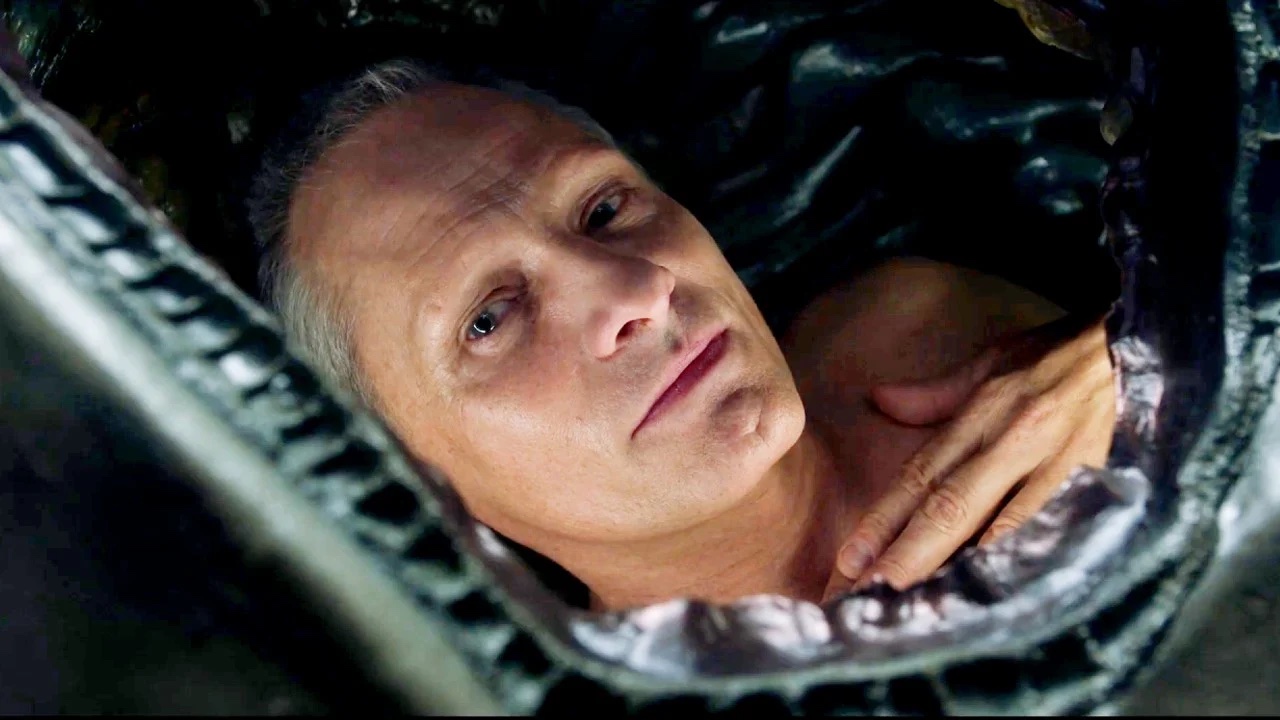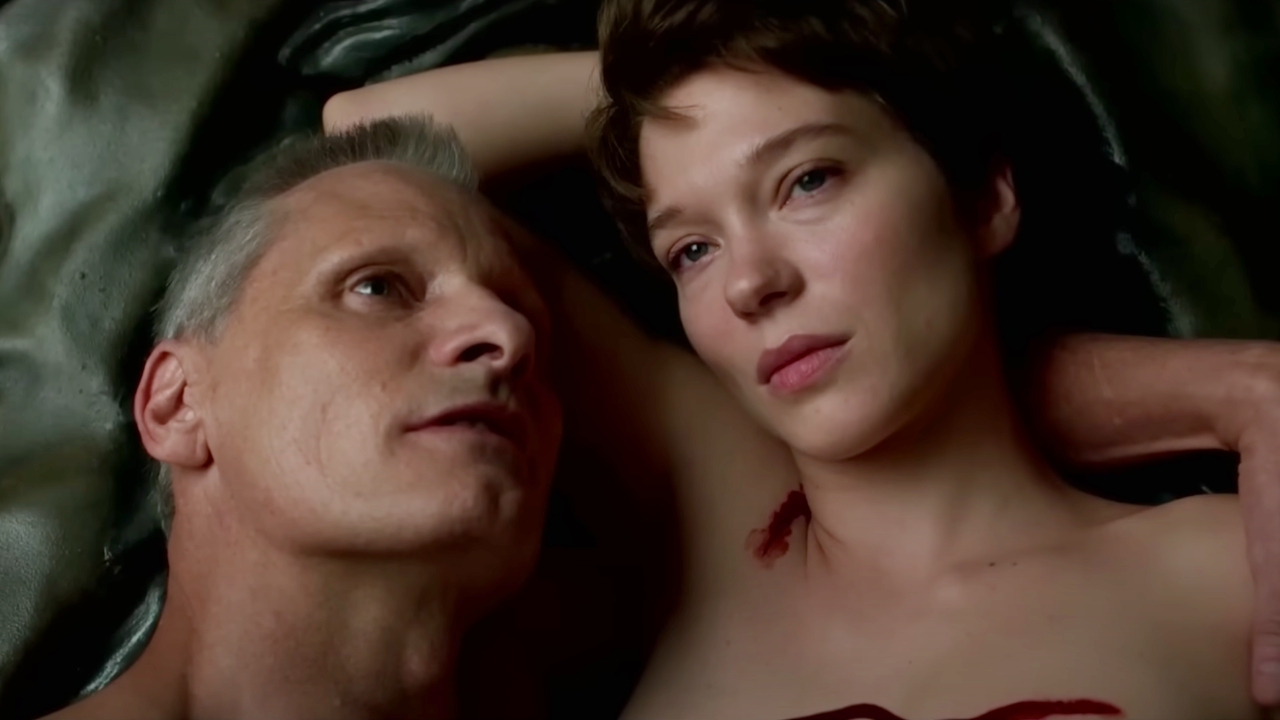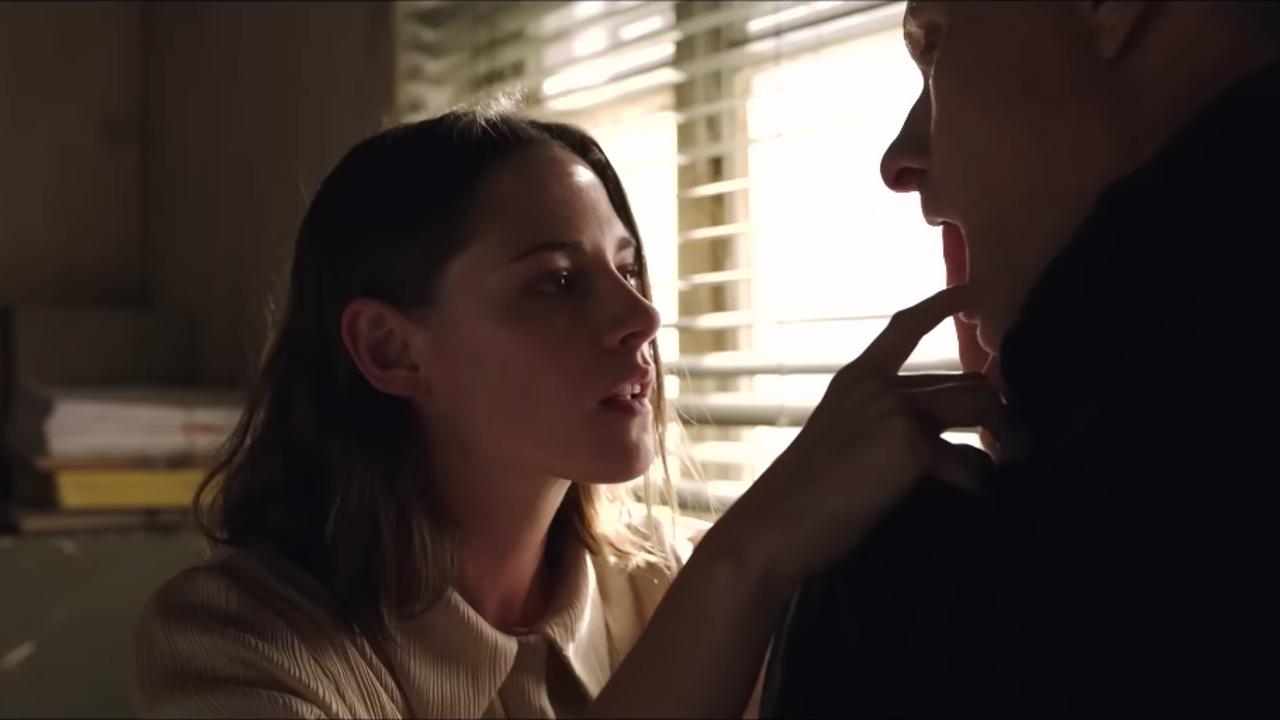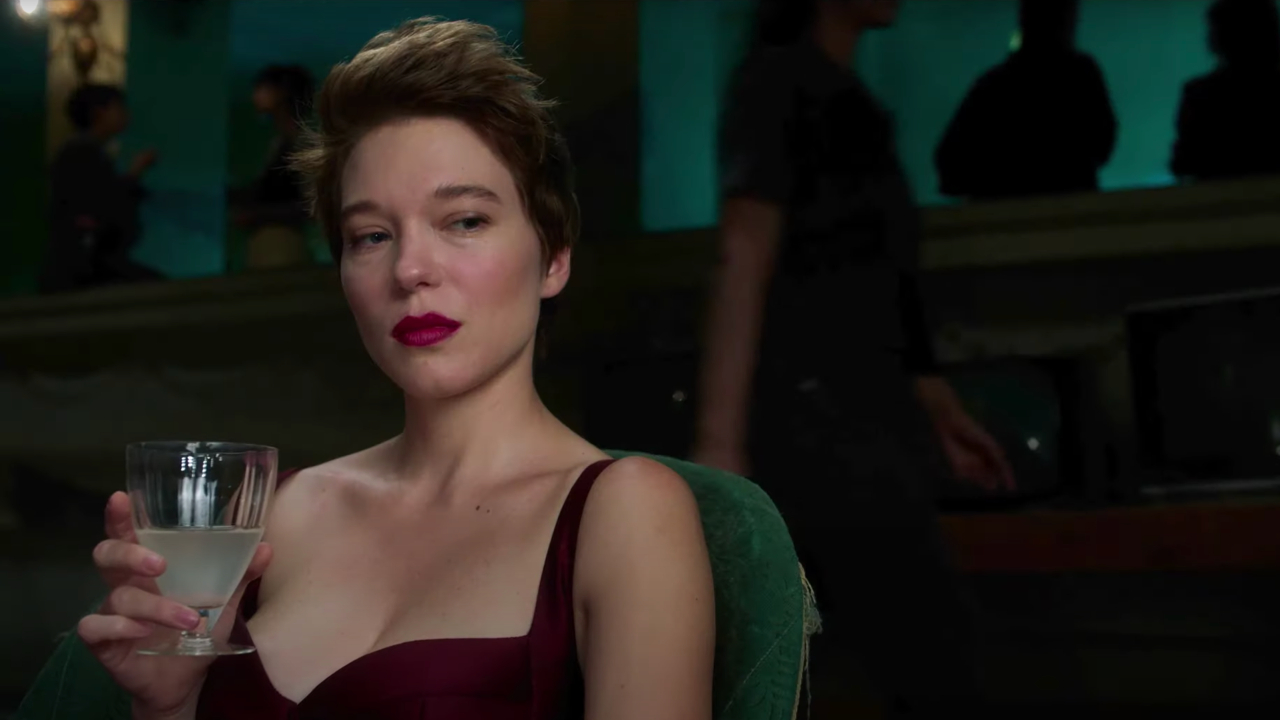Crimes Of The Future Ending Explained: What Does The Abrupt Conclusion Mean?
It all comes down to a plastic chocolate bar.

SPOILERS are ahead for David Cronenberg’s Crimes of the Future.
Since the 1970s, David Cronenberg has established himself as a distinct filmmaker with a tendency to shock and challenge his viewers with ideas of visceral bodily transformation and and distinct themes to ponder as the credits roll. That continues with the Crimes of the Future ending following an intriguing imagining of a time where humans have a different definition of the line between pain and pleasure. It’s time to break down how the movie concludes and what it's perhaps trying to say.
Crimes of the Future takes place on an unspecified date in the future where pollution and climate change have seriously affected the human race. Due to this, there have been significant advances in biotechnology and human bodies are perhaps changing in a way where they no longer feel physical pain the way they used to (and we do now). As members of the Crimes of the Future cast, we follow two performance artists, Viggo Mortensen’s Saul Tenser and Léa Seydoux’s Caprice, the latter who regularly performs advanced surgeries on her partner for the entertainment and awe of audiences. Now, to break down the ending:

What Happens At The End Of Crimes Of The Future
Throughout Crimes of the Future, Saul is trying to make best use of his body for his art. As we learn, Mortensen’s character has the unique ability to grow new organs, which he is using to his advantage in his shows, because Caprice can remove them for performances in front of a live audience. Amidst this, Saul and Caprice are logging the new organs he creates to the “National Organ Registry,” which is a fairly new governmental office designed to uphold the state’s restrictions on human evolution.
As Crimes of the Future hits its third act, the focus moves toward another body rather than Saul Tenser. The focus becomes on the corpse of Brecken, a young boy who was killed by his mother in the beginning of the movie. After his father, Lang (Scott Speedman), retrieves his son’s corpse, he offers the body up to Saul and Caprice to have an autopsy performed on him for their show. The autopsy would not only shake up the pair’s act but show the public something new in the direction of human evolution with Brecken’s insides. Lang tells them that Brecken genetically inherited the ability to eat plastics following a synthetic surgery Lang received.
Saul and Caprice agree to the public autopsy, but it does not prove to be the “miracle” Lang sells it as, but we do see a ton of organs flooding his body. Lang is then brutally killed and the final scene is between Saul and Caprice in their home. There, Saul decides to try a plastic chocolate bar that Lang had created and used to kill someone earlier in the film. As Caprice films him eating it, he ingests it and is able to successfully consume the plastic.

What Was Going On With Saul Tenser?
Saul Tenser was working undercover with Detective Cope throughout Crimes of the Future, frequently meeting with him throughout the film, dispelling information based on his own dealings within the performance art scene he is part of. But, due to his actions throughout the movie, it’s clear that Saul didn’t take a particular side on the debate over human evolution except for when it served his own job as a performance artist.
Your Daily Blend of Entertainment News
As far as what was going on with Saul’s body, it is explained in the film that he has Accelerated Evolution Syndrome, which allows him to grow these organs for his shows, but also somehow makes it more difficult for him to process regular foods. Saul is seen eating his meals in a specific chair that looks to help him cope with the condition by moving his body around while he eats.

What The Abrupt Ending Means And Symbolizes
Crimes of the Future begins with Breckin, and the child becomes a major part of the story David Cronenberg aims to tell. As we see early in the film, Breckin pretty much eats anything and is able to digest it. His mother, disturbed by his eating habits, kills him in his sleep and then calls his father to pick up his body. Knowing the information we do from the previous sections, it seems he had a similar condition to Saul. Seeing as Breckin was able to eat plastics and other odd items as food and be OK, Saul in the final scene decides to eat a plastic chocolate bar.
As the conclusion shows, he is fine afterwards, showing that perhaps in this future humankind is being so affected by pollution and climate change, they will not need human food to survive at some point. It could be a discovery that would change the society of Crimes of the Future as they know it. The bite of the plastic chocolate bar is an abrupt way to end the movie, but also is a way for audiences to think and imagine how our evolution could potentially take us further away from being human.

Other Themes Crimes Of The Future Explores
Aside from the ending of Crimes of the Future, the movie explores a number of ideas, including those Viggo Mortensen and Léa Seydoux spoke to CinemaBlend about in our interview. Seydoux, of the James Bond movies, told us,
For me, the way I understood the movie was that it was a metaphor about what it is to be an artist, the main theme, but of course with David it's so layered that there's so many.
Cronenberg, who wrote the script over 20 years before shooting it, has also spoken to the movie being about artistry. He told Variety this:
Tenser is really an avatar, a template or model of the artist who is actually giving everything he could give, opening himself up and giving what is the deepest, most intimate part of himself hidden inside. He’s offering it up to his audience and therefore being incredibly vulnerable to ridicule, to rejection, to misunderstanding, to anger. And to me, that is the model of a true passionate artist.
Seydoux shared honestly that she didn’t really know what to make of the film when she first read it, but really latched on to the characters when playing the role. Mortensen called the movie a “very tender love story,” about a committed relationship that includes sacrifice for one another. Perhaps, Crimes of the Future is this complex painting we’ll all take something else from? What we're certain of is there are a lot of different meanings one can take from it.

Sarah El-Mahmoud has been with CinemaBlend since 2018 after graduating from Cal State Fullerton with a degree in Journalism. In college, she was the Managing Editor of the award-winning college paper, The Daily Titan, where she specialized in writing/editing long-form features, profiles and arts & entertainment coverage, including her first run-in with movie reporting, with a phone interview with Guillermo del Toro for Best Picture winner, The Shape of Water. Now she's into covering YA television and movies, and plenty of horror. Word webslinger. All her writing should be read in Sarah Connor’s Terminator 2 voice over.
